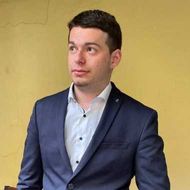- A
- A
- A
- ABC
- ABC
- ABC
- А
- А
- А
- А
- А
- HSE University
- Faculties
- Faculty of Social Sciences
- School of Psychology
- Events
- WALKING SPEED OF PEDESTRIANS IN DIFFERENT URBAN LANDSCAPES
-
Education
-
The School
- About
-
Laboratories
-
- The Scientific-Educational Laboratory of Ability Psychology
- Center for Sociocultural Research
- International Laboratory of Positive Psychology of Personality and Motivation
- Laboratory for Cognitive Research
- Cognitive Psychophysiology Laboratory
- Vision Modelling Laboratory
- Laboratory for the Neurobiological Foundations of Cognitive Development
-
- Partners
- Staff Members
- International Cooperation
Phone: +7 (495) 772-95-90 *15366
Email: dekpsy@hse.ru
Address: 101000, Moscow, Armyanskiy per. 4, c2
Address for correspondence: 20 Myasnitskaya Ulitsa Moscow 101000 (School of Psychology)
Корякина М. М., Агранович О. Е., Bermúdez-Margaretto B. et al.
IEEE, 2023.
In press
Гулина Е. В., Осокина Д. А., Любич Л. А. et al.
Crime, Media, Culture. 2024.
Otstavnov N., Fedele T., Utyashev N. et al.
In bk.: 2024 IEEE Ural-Siberian Conference on Biomedical Engineering, Radioelectronics and Information Technology (USBEREIT), 13-15 May 2024. IEEE, 2024. P. 220-223.
Tsigeman E., Likhanov M., Kalinnikova L. et al.
00. 00. PsyArXiv Preprints, 2024
The School promotes cutting-edge research, multidisciplinary studies, education in English. We are increasing the number of courses in English all the time and have started two English-speaking Master’s Programs. Our researchers have access to Eye trackers, TMS, multi-channel EEG, MEG and fMRI techniques.
The School also aims to train psychologists, who can apply their knowledge in the fields of economics, banking, human resources management, organizational development, ecopsychology and team-building.

WALKING SPEED OF PEDESTRIANS IN DIFFERENT URBAN LANDSCAPES
Speaker: Aliya Redchenko, fourth-year student of the "Psychology" program at National Research University Higher School of Economics
Victoria Yerofeyeva, intern-researcher of the Laboratory for the Psychology of Salutogenic Environment and the Centre for Modern Childhood Research, graduate student of the school of psychology.
Moderator: Sofya Reznychenko, PhD in Psychology, Senior Research Fellow at the Department of Psychology, National Research University Higher School of Economics.
The seminar will examine the relationship between pedestrian walking speed as an indicator of stress and the attractiveness of the urban landscape (greenery, traffic noise, tree height, and the winding nature of pedestrian paths). The walking speed of 1,364 pedestrians was measured at four locations on May 2, 2024, from 7:00 AM to 10:00 PM. It is argued that the pace of life for city dwellers decreases in more attractive landscapes. The main dynamics of changes in walking speed throughout the day are outlined, correlating with the primary purpose of walking: increasing in the morning and evening due to commuting to work and home, and decreasing during the day and late evening when walking becomes more recreational. The results obtained suggest that enhancing landscape attractiveness can be used as a method to slow down the pace of urban life and reduce the impact of stressors associated with a fast-paced lifestyle.
In the second part of the seminar, Victoria Yerofeyeva will share her experience of studying at the University of Zurich as part of postgraduate studies for laboratory employees and answer questions from the audience. The University of Zurich is the largest university in Switzerland and one of the world's leading centres in the field of psychology.
- About
- About
- Key Figures & Facts
- Sustainability at HSE University
- Faculties & Departments
- International Partnerships
- Faculty & Staff
- HSE Buildings
- Public Enquiries
- Studies
- Admissions
- Programme Catalogue
- Undergraduate
- Graduate
- Exchange Programmes
- Summer University
- Summer Schools
- Semester in Moscow
- Business Internship
-
https://elearning.hse.ru/en/mooc/
Massive Open Online Courses
-
https://www.hse.ru/en/visual/
HSE Site for the Visually Impaired
-
http://5top100.com/
Russian Academic Excellence Project 5-100
- © HSE University 1993–2024 Contacts Copyright Privacy Policy Site Map
- Edit


